Advertisement
How spreading rock dust on farms could be a climate solution
Resume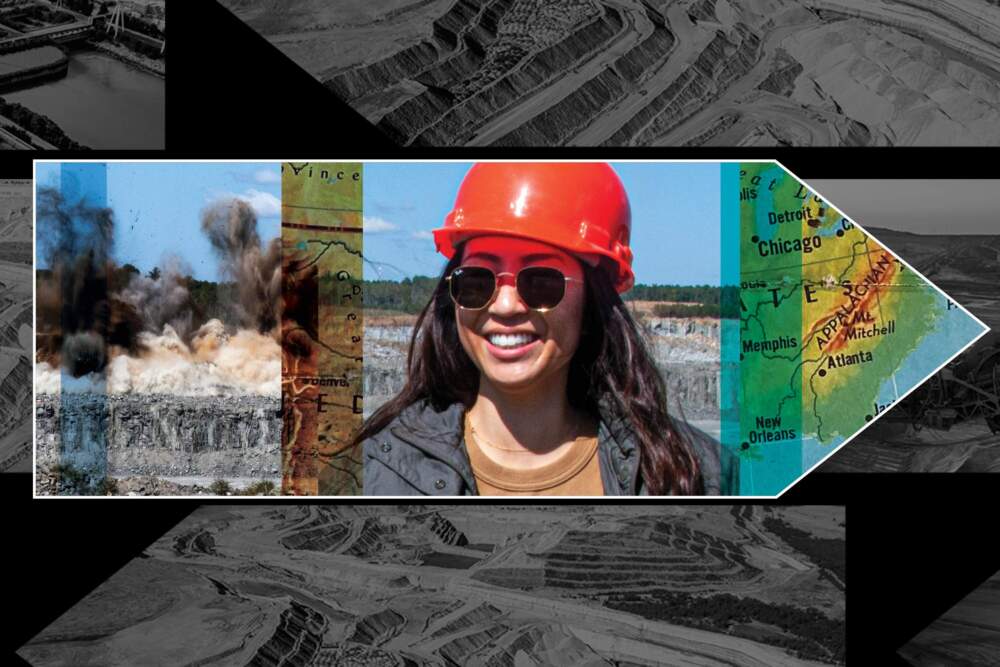
Find out more about our Reverse Course series here.
Mary Yap adjusts her hard hat and looks over the cavernous expanse of the Sunrock quarry in Butner, North Carolina. It’s a blast day and Yap is a guest, so the demolition men hand her a detonator to do the honors. After a countdown, she presses the button and 50,000 tons of stone crumble like gingerbread.
The team high-fives — the natural consequence of witnessing a rock face the size of an apartment building explode — and it’s time to reap the rewards. Quarry workers begin to scoop up the rubble, an igneous stone called traprock, but Yap is after something else.
Yap co-founded a company called Lithos Carbon that takes the leftovers from quarries like this one, a gray powder that she says could help fight climate change.
“When we saw our first massive mountains of basalt dust,” she says, “we knew that this could actually be a meaningful solution.”
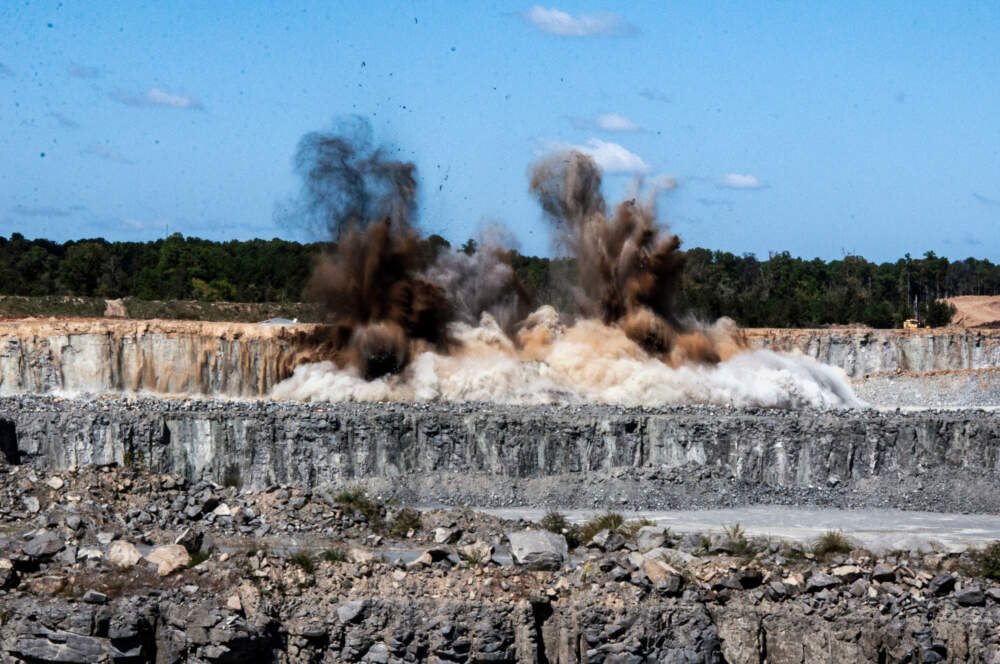
Lithos is one of several companies trying to hack a basic geochemical cycle known as weathering. The science is geology 101: Rainwater is slightly acidic. When it erodes rock, it carries some carbon compounds downstream, slowly bleeding carbon dioxide out of the atmosphere and into deep pockets of the Earth, where it’s stored for eons.
“It’s really powerful. It removes about 1.1 billion tons of CO2 from the atmosphere every year,” Yap says. “Without this one process on Earth, the planet would look like Venus with greenhouse gasses everywhere.”
Yap and her co-founders want to speed up that natural process by grinding up rocks that do this naturally, like basalt, to increase their surface area for reaction. So they cold-called quarries across the country and asked for rock dust samples.
Sunrock was one of the few who called back. They sell stone for construction materials and asphalt. After rinsing the stone and wringing out the water, they’re left with a cakey residue that has no use. It gets mounded up in berms and into a big pile at the quarry.
“We affectionately call that pile brown mountain,” says Alex Culpepper, corporate business development manager for The Sunrock Group. “For the last 10 years, we’ve taken that product and just piled it up on site. We’re starting to run out of places to pile it up out here.”
Carbon farms
Lithos is not the only company banking on “enhanced” rock weathering to become a major mechanism for carbon storage. UNDO also spreads basalt on farms, while Project Vesta and Eion want to spread a green mineral called olivine for the same reasons.
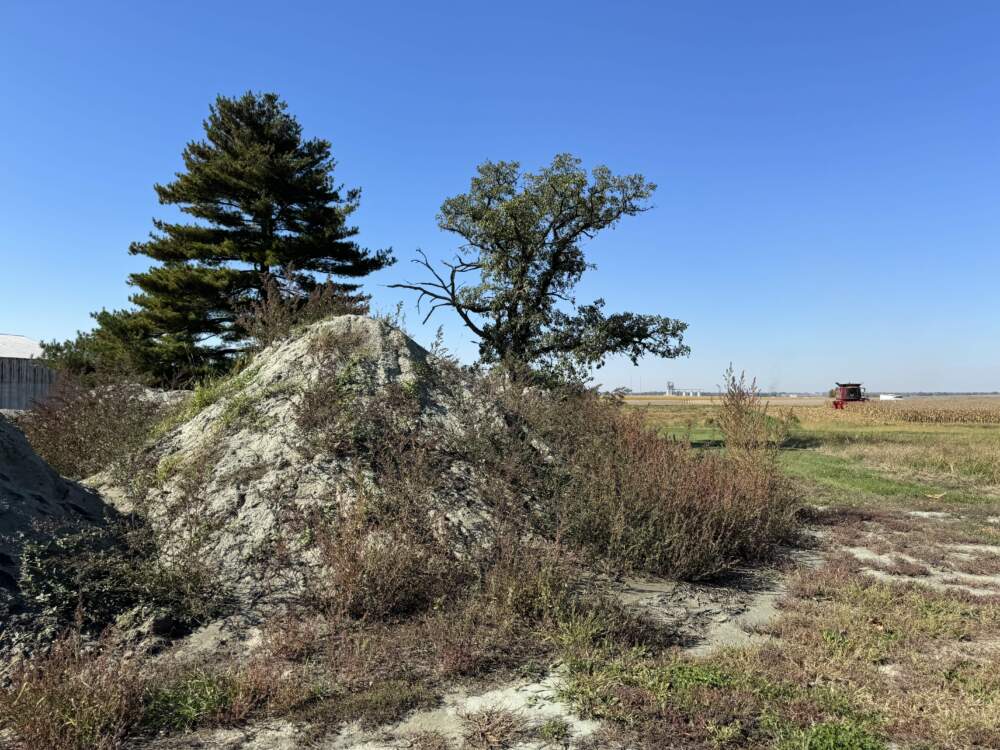
Farmers are natural partners for these companies because many already apply a different type of rock dust to their crops.
Russell Hedrick is one of them. He grows corn and soybeans in North Carolina and Georgia, and he used to spread agricultural lime, a common soil additive that raises pH. Now, he’s spreading basalt trucked in by Lithos instead.
Hedrick is running his own experiment to find out how the new rock dust stacks up against lime. One half of a soybean field where he spread the basalt is green well into the late fall. The other half, Hedrick’s control group, is starting to turn yellow.
“Anytime we can keep our plants healthier longer, this just correlates to more money for us on the farm,” he says, “and a better product for consumers.”
Those rows of green soybeans are vindication enough, Hedrick says, but there’s another reason he’s happy to offer his farmland as a venue for Lithos’ plan to capture carbon.
“We’re getting a premium for that carbon credit. They’re paying $50 an acre, which is super awesome,” says Hedrick.
Even if he had to pay for the basalt dust, Hedrick says he probably would, because of the bump it seems to give his crops compared to lime.
This isn’t the only way Hedrick is trying to use his farm to store carbon. He sprays compost tea, plants cover crops, and says he “spoon feeds” micronutrients to his crops like a doctor doting on patients. That makes him part of a growing movement called regenerative agriculture, which aims to put more carbon back into the soil than it takes out.
Other companies are paying farmers to store carbon and create markets for soil carbon sequestration. Hedrick says he’s been approached by several.
“The problem is, by the time they chop up what they’re taking out of it, the farmer doesn’t make any money,” he says. “A lot of farmers have been frustrated with that market and just haven’t gone into it like we did.“
The Biden Administration has put billions into "climate-smart agriculture and forestry practices," but how much carbon has actually been stored on farms — and crucially, how much is stored long-term — remains murky.
Still, if American farmers could store just one ton of carbon per acre, Hedrick says it would make a dent in the climate crisis.
“Do I think that farmers could play a role in environmental stewardship and addressing some of our climate change issues? Absolutely,” Hedrick says. “I think it’s kinda cool to be a part of that.”
Balancing the books
There is at least one big problem with turning American farms into carbon sinks, says Ilsa Kantola, a soil ecologist at the University of Illinois.
“The corn-soy system in the American Midwest loses carbon to the atmosphere overall,” she says. “More carbon is lost from the system through soil respiration, plant respiration and the harvest of the biomass than is put in by the plant roots and incorporated through tillage.”
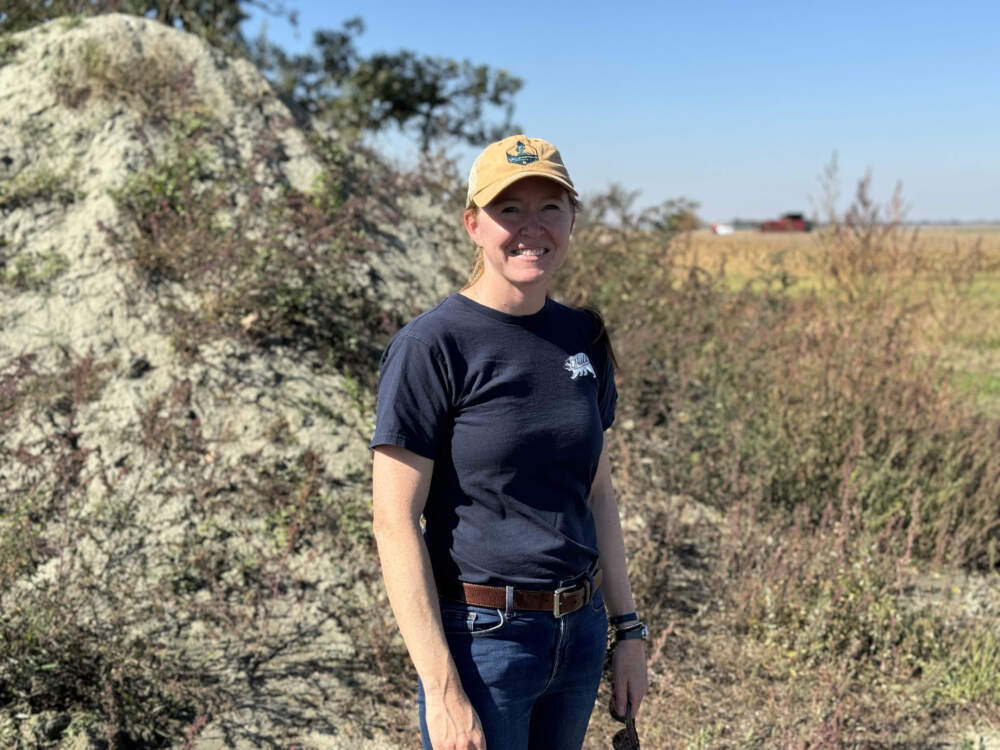
Kantola is part of a team at the University of Illinois studying agriculture’s role in the carbon cycle. Some plants take more carbon out of the air than they put in: Trees, native prairie grasses with root systems that can grow more than 15 feet deep, and miscanthus, a nonnative relative of sugar cane that can turn into fuel. Replacing some corn and soy fields with other plants could reduce greenhouse gas emissions, Kantola says, but so far the economics don’t make sense.
“Encouraging a more heterogenous landscape hasn’t been going well,” Kantola says. “There isn’t any money in miscanthus at the moment. Corn and soy is here and here to stay.”
At the University of Illinois’ Energy Farm in Urbana, a combine rolls over neat rows of corn, harvesting the summer’s crop and spitting a fountain of kernels into a towering steel bin. These fields are running a bigger version of the A/B test Hedrick set up on his farm, assessing the impact of basalt on carbon storage and plant growth.
Ragweed sprouts right out of the pile of rock dust sitting on the side of the field — evidence of its nutrient-rich nature. Hedrick says he saw a 30% jump in yield when he started using basalt. Kantola says there’s more research needed into the long-term impacts, and whether that yield boost holds up. In the meantime, she says there’s plenty of evidence that basalt is safe for crops.
“The risk of course would be to the companies to start selling a lot of credit for basalt application and then not be able to follow through on the actual carbon capture numbers,” she says. “We’re early in this process.”
Kantola recently published a scientific paper that found adding basalt to corn and soybean farms could offset up to 42% of carbon emissions from the plants and soil. But the process comes with its own carbon problem.
“The big one is the transportation emissions,” says Evan DeLucia, who runs the lab overseeing a lot of this research at the University of Illinois.
Diesel-burning trucks hauling basalt long distances from quarries to farms could negate any carbon savings from enhanced rock weathering, DeLucia says, “and then we’ve just shot ourselves in the foot.”
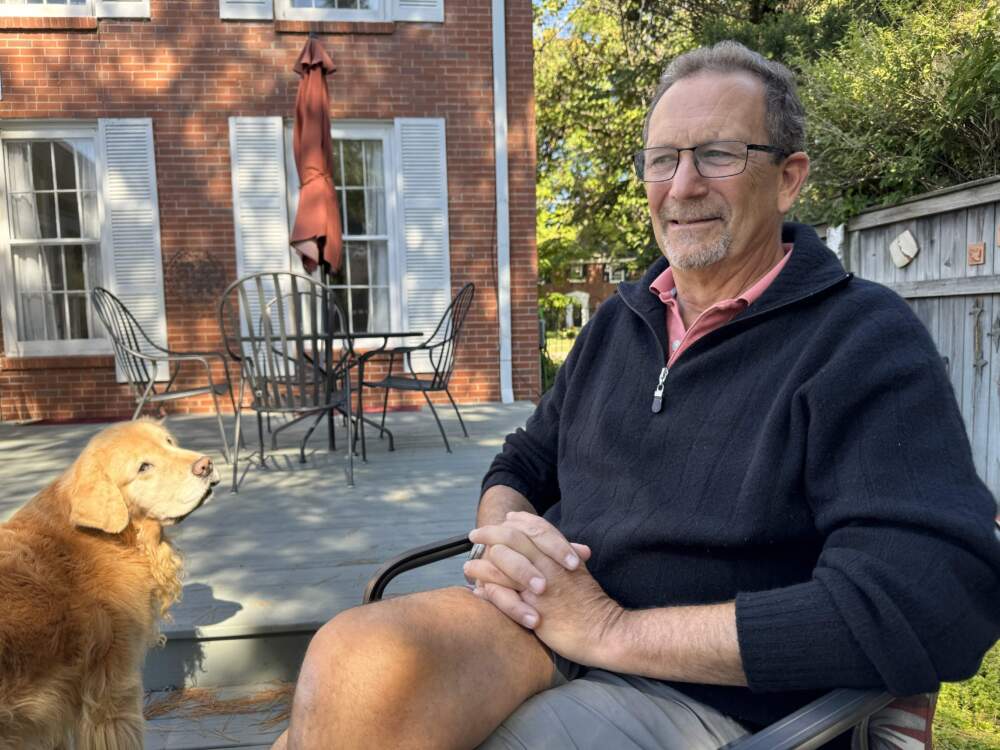
DeLucia says if enough farms and quarries buy into the idea of spreading basalt, supply chains could shift to less carbon-intensive modes of transport, like barges down the Mississippi. Still, companies like Lithos face a challenge scaling up.
Their business model is selling carbon removal credits to companies including Stripe, Alphabet, Shopify and Meta. Delucia says that means companies like Lithos have to account for all of their emissions.
“My opinion is that until we price carbon appropriately and start dealing with proper carbon markets, we’re really going to be struggling with this challenge,” he says. “The minute we start monetizing this we’ll move forward quickly. But then the question becomes: How do you quantify it? Because now money’s at stake and approximations are not working so well.”
Scaling up
Mary Yap takes off her hard hat and comes into the scale house, where trucks get weighed before they leave the quarry. Right now, they’re hauling stone for asphalt and construction materials, but they could someday be doing brisk business hauling basalt dust, too.
Yap says Lithos has already captured 10,000 tons of carbon, and they hope to capture ten times that amount in the next year. It’s far from the 100 billion tons or more that scientists say we’ll need by the end of the century, but Yap says she’s not worried about the logistics of scaling up.
Yap, who comes from a farming family, says the most important part of their supply chain isn’t the rock dust or the financial instruments, but the farmers.
“We think that if you can plug into mass transfer on currently existing scales, that’s powerful. All these farmers, they’ve got the spreader. They know how to do this, they’ve already been spreading other rock dust,” she says. “They’re growing this food and they’re planning on doing so for a long time. That seems like a pretty good supply chain to work with.”
There is plenty of basalt around the world, but it’s farmers who will ultimately decide if spreading rock dust on crops becomes a viable climate solution.
This segment aired on December 4, 2023.
